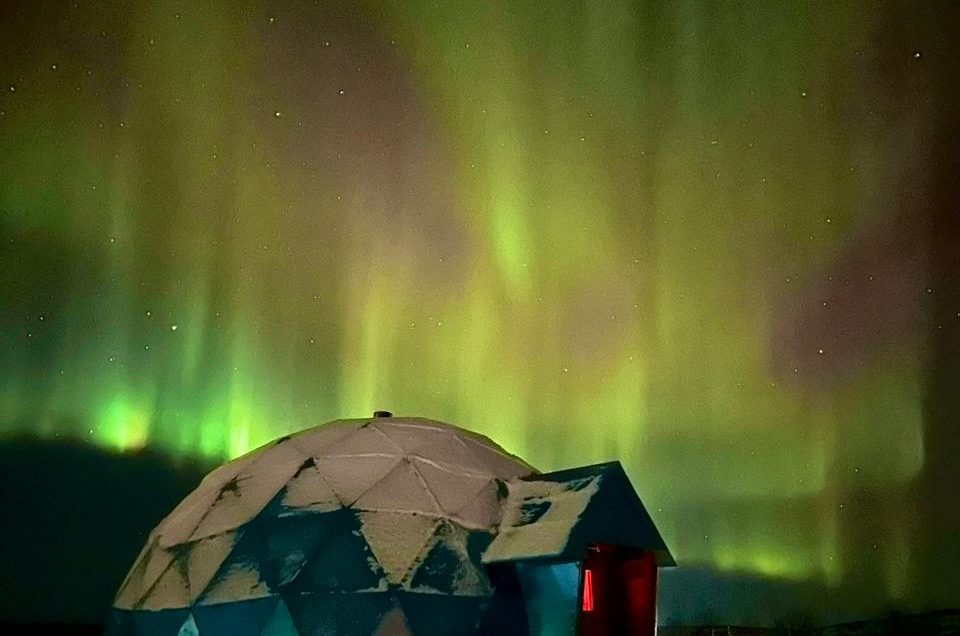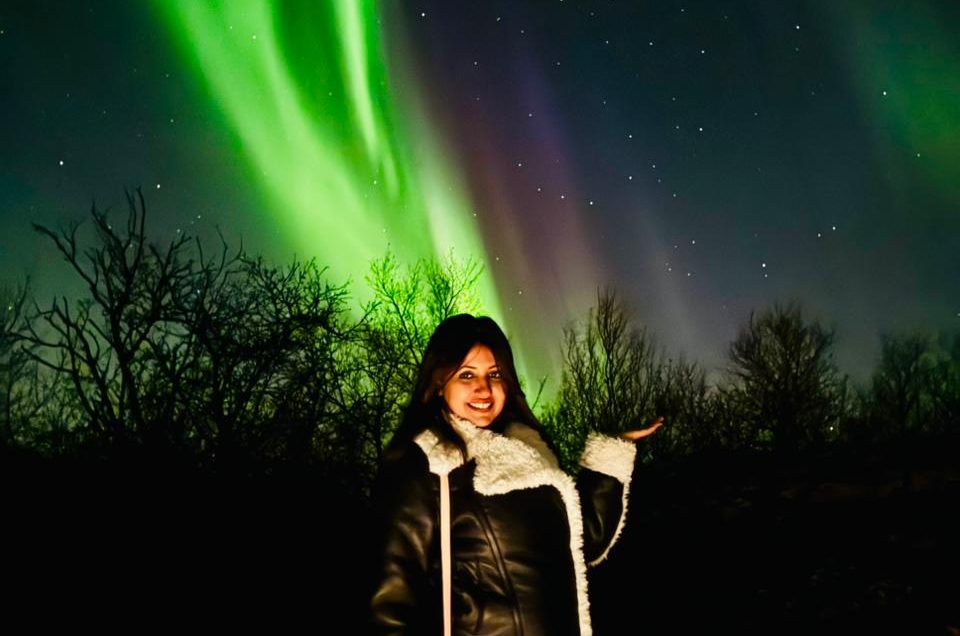Planning your Northern Lights hunting trip but confused about how to read an Aurora forecast?
You’re not alone — most travellers struggle with this!
This guide will walk you through everything you need to know to read Northern Lights forecasts with ease — so you can chase the Aurora like a pro and never miss nature’s most magical show.
What Are the Northern Lights?
The Northern Lights, or Aurora Borealis, are one of Earth’s most breathtaking natural wonders. They occur when charged particles from the Sun collide with gases in Earth’s atmosphere, painting the night sky with glowing waves of green, red, and purple.
While most travellers head to Iceland, Finland, or Norway for Aurora chasing, there’s a lesser-known yet equally spectacular Arctic gem — Murmansk, Russia. It’s not only stunning but also more affordable and less crowded, making it perfect for solo travellers looking for an authentic Northern Lights adventure.
How Are Auroras Formed?
Here’s the quick science behind it:
- The Sun releases charged particles known as solar wind.
- The Earth’s magnetic field directs these particles towards the North and South Poles.
- At altitudes between 60–200 miles above Earth, these particles collide with oxygen and nitrogen in the atmosphere.
- These collisions create glowing lights — the beautiful Auroras you see dancing in the night sky.

Why Do Auroras Have Different Colours?
The colours depend on which gases the solar particles hit and how high in the atmosphere they collide.
- Green – The most common colour, caused by oxygen around 60 miles up.
- Red – Rare, caused by oxygen higher up (around 200 miles).
- Blue – Caused by nitrogen; a less frequent sight.
- Purple – A mix of oxygen and nitrogen interactions; if you see this, you’re really lucky!
Pro tip: Cameras capture more red and purple tones than the human eye, so if your photos look different from what you saw, that’s completely normal.

Understanding Aurora Forecasts
Checking Aurora forecasts weeks in advance won’t help much — the weather and solar activity change constantly.
What you need are real-time Aurora forecasts, which update every few minutes and tell you where and when the lights are most likely to appear.
Key Tools Every Aurora Hunter Should Know
1. Kp Index
The Kp Index measures geomagnetic activity on a scale from 0 to 9.
- Kp 0–2: Faint activity, visible near the poles.
- Kp 3–5: Moderate activity — visible in more regions.
- Kp 5–6: Strong activity with brighter Auroras.
- Kp 7–9: Major geomagnetic storms; Auroras visible far beyond Arctic regions.
While the Kp Index gives a good overview, it shouldn’t be the only tool you rely on. The following factors matter just as much.
2. Magnetometers
These sensors detect tiny shifts in Earth’s magnetic field caused by Aurora activity.
Here’s how to read them:
- Negative values (-150nT or lower): Great sign — Auroras are active.
- -200nT to -500nT: Expect a spectacular show!
- Positive readings (+150nT): The lights might be “charging up” for a display, so that’s a sign for you to begin prep for the hunt.
3. Bz Direction
Think of Bz as the direction of the magnetic field.
When the Bz turns negative, the chances of seeing strong Northern Lights increase significantly.
4. Bt Strength
This measures how strongly the Sun’s magnetic field interacts with Earth’s.
If Bt > 20nT, you’re in for a bright Aurora display!
5. Solar Wind Speed
Imagine the solar wind as a river flowing from the Sun — the faster it flows, the more energy it carries.
Faster solar wind = brighter and more dynamic Northern Lights.
6. Cloud Coverage
Even perfect solar conditions mean nothing if clouds block your view.
Here’s what to know:
- Low clouds: Worst for visibility — they’ll block everything.
- Mid clouds: Sometimes manageable.
- High clouds: Usually okay, may even enhance your photos.
Check real-time cloud maps before heading out — white or light grey areas mean clear skies, while dark patches mean poor visibility.
If it’s cloudy:
Drive 30–40 minutes to nearby areas with clearer skies — even small moves can make a big difference!
Quick Tips for Aurora Chasing
- Don’t rely on yesterday’s forecast — Aurora conditions can change within minutes.
- Be flexible — move locations or adjust plans if needed.
- Keep warm & be patient — layers, hot drinks, and a positive attitude go a long way!
- Most importantly: If skies are clear, just look up — sometimes the best shows happen when you least expect them.
Why Join Your Travel Genie’s Northern Lights Trip
At Your Travel Genie, our trips are designed especially for solo travellers who want to chase the Northern Lights in a safe, fun, and social way.
Our expert Genies know exactly how to read real-time Aurora forecasts, predict ideal viewing times, and find clear skies. We make quick location decisions to give you the best chance of seeing the lights — and we’ll capture those unforgettable photos for you too.
Join us in Murmansk for an affordable, offbeat, and unforgettable Northern Lights hunting trip. You’ll go home not just with glowing skies in your camera, but also with new friendships and memories that last a lifetime.
Ready to Hunt the Northern Lights in Murmansk?
Join our next Northern Lights trip for solo travellers and experience the Aurora magic — no science degree required, just curiosity and a sense of adventure!




